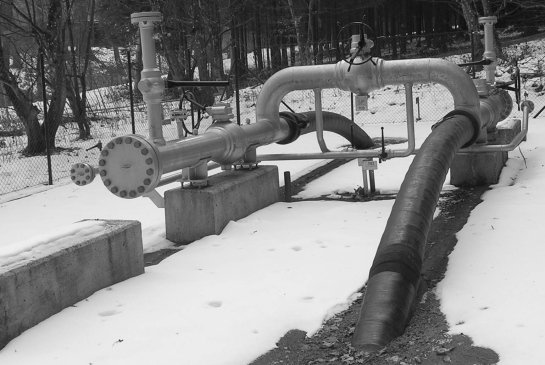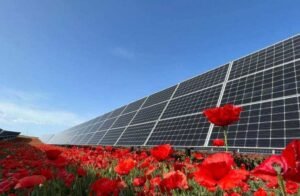Energy Security: Concepts and Concerns in India

This essay is a literature review of the conceptual framework of ‘energy security’ in the international and Indian contexts.
The globalisation of energy markets has increased interdependence across the regions of the world. The access to energy today depends on international networks of infrastructure and transport. This has heightened the risks of major supply disruptions which result from of political conflicts, wars, technical system failures, accidents, sabotage, extreme weather events and financial market turmoil. Additionally, the global energy market is characterised by the reliance by energy importing economies on an ever-smaller group of countries.
As energy is essential for the economic growth and development of a country, it has come to be recognised as a ‘strategic commodity’. This is because any uncertainty in its supply can threaten the effective functioning of an economy. It therefore becomes an imperative for a country to ensure secure energy supplies at affordable rates. This crudely defines the idea of ‘energy security’.
The International Energy Agency (IEA) definitions of energy security have focused on the “adequate supply of energy at a reasonable cost”, and have referred to energy security to be just “another way of avoiding market distortions” (IEA, 1995). The underlying belief of these definitions is that “smoothly functioning international energy markets” will deliver “a secure – adequate, affordable and reliable – supply of energy” (IEA, 2002). IEA has claimed that energy security always consists of both a physical unavailability component and a price component, although their relative importance depends on the market structure (IEA, 2007).
Chester (2010) points out that these definitions have primarily been market-centric. The underpinning logic of such market-centric definitions is that due to the liberalisation and globalisation of energy markets, energy security is a market outcome, and can be defined in market terms – specifically, supply and price. The implication of such definitions is that the purpose of energy security strategies must be to make markets work.
Broader definitions of energy security embrace dimensions beyond market supply and price. The European Commission’s Green Paper (EC, 2000) states that energy security also entails respecting environmental concerns and working towards sustainable development. They clarify that the security of supply does not seek to maximise energy self-sufficiency or to minimise dependence, but aims to reduce the risks linked to such dependence. Definitions of energy security by the Asia Pacific Energy Research Centre (APERC, 2007) and the United Nations Development Programme (UNDP, 2004) also stress on environmental impact and sustainability.
Chester (2010) lists five fundamental aspects that characterise ‘energy security’. Firstly, energy security is about the management of risk – the risk of uninterrupted, unavailable energy supplies; the risk of insufficient capacity to meet demand; the risk of unaffordable energy prices; the risk of reliance on unsustainable sources of energy. These risks may be caused due to energy market instabilities, technical failures or physical security threats. Secondly, the definition of energy security may be framed to reflect a country’s energy mix, the abundance of local resources and import dependence. Thirdly, the term energy security reflects a concept of strategic intent, implying that energy security is not a policy in itself, but that specific policies have to be adopted by governments to achieve the objectives of energy security. Fourthly, energy security has temporal dimensions – the risks and threats to physical supply differ across short, medium and long-term horizons. Short-term risks include terrorism attacks and technical failures. Long-term risks, on the other hand, concern the adequacy of supply to meet demand and adequacy of infrastructure to deliver supply to markets. Fifthly, the term energy security has to be applied keeping in mind the significant differences between the oil, gas, nuclear and other energy markets and infrastructure.
The polysemic nature of ‘energy security’ hence necessitates context specific definitions and strategies. Given these fundamental aspects of energy security, this paper will first look into what the primary factors that influence the concept of energy security in India are.
Energy Security in India’s Context
India’s discourse on energy security so far has been primarily framed by three issues: energy demand due to economic growth, energy poverty in India, and the implications of its energy paths on the environment. The forces that have influenced India’s economic growth over the last two decades have also led to a paradigm shift in the energy policy of the country. In recent years, geopolitics has become a central concern in energy trade, and is characterised by resource nationalism, in part due to the threat to energy infrastructure and transit routes.
Sudarshan and Noronha (2009) lay out five important factors that have contributed to increasing energy demand in India. First, the real income of India has grown at a rate of 6-7% per annum over the past two decades, and the Planning Commission of India has a future targeted growth rate of 8-10% per annum for the next decade. TERI (2006) estimates that India will require 2023 mtoe of energy by the year 2031 to feed such economic growth rates. Second, a structural shift has been taking place in India, which has accelerated since the 1991 economic reforms. This shift is from agriculture towards the services sector, which is relatively energy intensive. Next, an annual population increase of about 1.9% p.a. has been observed over the past two decades. Importantly, the urban population in India was 25.5% in 1990 and is expected to rise to 40% by 2030. Given per capita energy demand in rural areas is low, this will further feed into India’s gross energy demand. Fourth, there is a growing transport sector. Fifth, an energy transformation is taking place, with a shift from biomass to electricity in rural India. Further, as of 2005, only 55% of rural Indian households had electricity access. Electricity demand is expected to rise, even as the government has significant plans to meet the demand (Planning Commission, 2008). Increasing import dependence of India on fossil fuel-rich countries has hence forced the government to rethink the way India engages with these countries.
Given the factors influencing the demand and consumption of energy in India, the Planning Commission of India defined energy security by modifying the definition of energy security given by The World Energy Assessment (UNDP 1999) to suit the Indian context better. This definition is accepted by the Indian government, and it is as follows:
“We are energy secure when we can supply lifeline energy to all our citizens irrespective of their ability to pay for it as well as meet their effective demand for safe and convenient energy to satisfy their various needs at competitive prices at all times and with a prescribed confidence level considering shocks and disruptions that can be reasonably expected” (Planning Commission, 2006)
This definition includes the key aspects of energy security, including those related to poverty and economic growth. The idea that the provision of energy ought to be “irrespective of their ability to pay” is a slight departure from the definitions of energy security accepted by several nations, which tend to be market oriented. By factoring in poverty and the inability of India’s citizens to pay for energy, it only stops short of according energy the status of a ‘right’. The income distribution angle is hence incorporated in the definition.
Additionally, this definition accounts for India’s import dependency of energy and the possibility of disruptions in the supply. There is also a veiled reference to what would be considered an appropriate level of risk, although this has not been quantified due to the uncertainties involved.
In the context of India’s energy security needs, Verma (2007) lays out a two principles to maintain energy security. He states that firstly, India must diversify the supply of energy, both by location and source. Secondly, he states that the resilience of energy systems must be maintained, which is a reference to “security margins” that act as buffers against shocks and provide facilities for recovery after disruptions. Resilience can come through spare capacity, strategic reserves, backup supplies of equipment, adequate storage capacity along supply change and the stocking of critical components of electricity generation.
Any policy measures taken by the government need to thus needs to incorporate these conceptual frameworks. Understanding these concepts is necessary in order to pursue rational policy making in the energy domain. Of course, policy implementation would ultimately revolve around day-to-day governance issues, and fiscal, administrative and political bottlenecks.
Sources:
- APERC, 2007, A quest for Energy Security in the 21st Century: Resources and Constraints, Asia Pacific Energy Research Centre, Tokyo, 2007
- Chester, L., 2010, “Conceptualising energy security and making explicit its polysemic nature”, Energy Policy 38, 2010, pp887-895
- European Commission (EC), 2000, Green paper: towards a European strategy for the security of energy supply, Commission of the European Communities, COM/2000/0769 Final, Brussels, 2000
- International Energy Agency (IEA), 1995, The IEA Natural Gas Security Study, OECD/IEA, Paris, 1995
- International Energy Agency (IEA), 2002, Energy Security, OECD/IEA, Paris, 2002
- International Energy Agency (IEA), 2007, Energy Security and Climate Policy: Assessing Interactions, OECD/IEA, Paris(March), 2007
- Planning Commission, 2006, Integrated Energy Policy Report of the Expert Committee, Planning Commission, Government of India, New Delhi, 2006
- Planning Commission, 2008, Eleventh Five Year Plan 2007-2011 : agriculture, rural development, industry, services, and physical infrastructure, Volume III, Planning Commission, Government of India, Oxford University Press, 2008
- Sahir, M. H., and Qureshi, A. H., 2007, “Specific concerns of Pakistan in the context of energy security issues and geopolitics of the region”, Energy Policy 35 , 2007, pp2031-2037
- Sudarshan, A., and Noronha, L., 2009, “Contextualizing India’s energy security” in Noronha. L., and Sudarshan, A. (Eds.) India’s Energy Security, Routledge, 2009
- TERI, 2006, National Energy Map for India: Technology Vision 2030, The Energy and Resources Institute (TERI), New Delhi, 2006
- United Nations Development Program (UNDP), 2004, World Energy Assessment: Overview 2004 Update, UNDP, New York UNDP, 2004
- Verma, S. K., 2007, “Energy geopolitics and Iran-Pakistan-India gas pipeline”, Energy Policy 35, 2007, pp3280-3301




